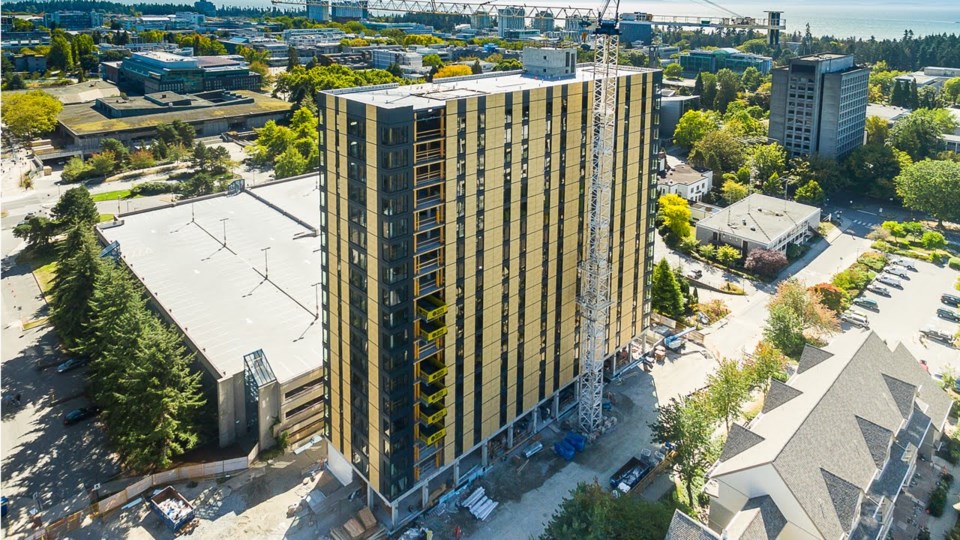Wood towers have come a long way since the log skyscrapers of Whitehorse, landmarks on the skyline of the northern city that have since been dwarfed by trials of six-storey wood-frame buildings and, more recently, the 18-storey Brock Commons tower at the University of British Columbia that was completed in 2017.
Recent changes to the B.C. Building Code are set to make 12-storey wood towers a mainstream option, paralleling the approval later this month of 18-storey wood towers in Washington state and changes to Canada’s national building code that take effect next year.
Riding the wave forward is Penticton’s Structurlam Products Ltd., part of the Adera Group of Cos. Adera originally invested in Structurlam in 2008, and today the timber manufacturer is booked solid with orders from Adera and other builders.
“We asked, ‘How can we build wood better?’ and we started turning to engineered structural woods as a solution,” said Eric Andreasen, vice-president of marketing and sales for Adera Development Corp.
Andreasen said Adera builds exclusively with wood and is calling its mass timbers “SmartWood,” a nod to both the sustainability and construction benefits of the material. The laminated timbers are set in floors and elevator shafts, creating exceptionally quiet residential spaces (which bear the Adera trademark “QuietHome”).
“We’re as quiet as, if not quieter, than concrete homes built to code,” Andreasen said.
Complaints about noise transmission have fallen to zero because the floors are solid but lack the density that sends percussive sounds hammering through buildings. QuietHome protocols also address airborne noise.
Russell Acton, a partner in Acton Ostry Architects, which designed Brock Commons, said allowing 12-storey wood buildings in B.C. is exciting because they make standard what was previously allowed only under site-specific regulations.
“I’ve had a fair degree of interest over the last two or three years, since Brock Commons was really moving along, but nothing’s really come to fruition,” he said. “I think the stumbling block is the approvals.”
The process was time-consuming, with just a couple of approvals possible each year, a deterrent for time-strapped developers.
Acton has encouraged developers to research approval timelines before embarking on a project.
With mass timber set for the mainstream, the one challenge could be producing enough for both encapsulated and exposed uses (exposed uses generally require additional mass for fire mitigation).
“My understanding is they’ve been pretty darn busy trying to stay on top of the current demand,” Acton said. “And that’s even without the code changing.”
The activity has Structurlam planning to boost capacity, which is well beyond where the company was when Adera became an investor.
“They’re booking years out in advance right now,” Andreasen said. “[It’s] a big increase from where it was when we first got involved with them.”



